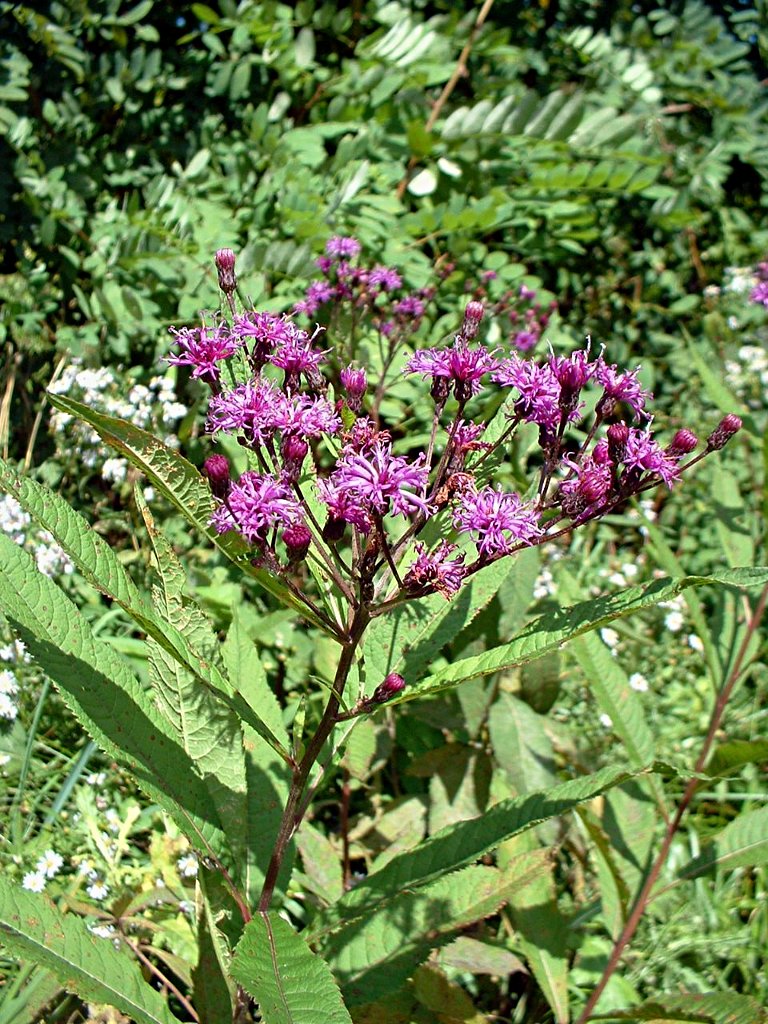
Hard to distinguish from Tall Ironweed, with which it apparently hybridizes. The height is a clue, but conditions can make Tall Ironweed as short as New York Ironweed. This specimen was found in an old cemetery in Beechview. Gray puts Pittsburgh out of the range of New York Ironweed, but most other authorities agree in placing it here. The distinction between Vernonia altissima and Vernonia noveboracensis is sketchy enough, however, that all our ironweeds may be races of the same species. In any event, the Tall Ironweed seems to be our most common.
The vivid purple of the ironweeds makes them one of our most spectacular native flowers, and enlightened gardeners are beginning to adopt them as ornamentals.
Gray describes the genus and the species:
VERNONIA Schreb. IRONWEED
Heads discoid, 16-many-flowered, in corymbose cymes; flowers perfect; involucre shorter than the flowers, of much imbricated bracts. Achenes cylindrical, ribbed; pappus double, the outer of minute scale-like bristles, the inner of copious capillary bristles. Perennial herbs, with leafy steins, alternate acuminate or very acute serrate leaves and mostly purple (rarely white) flowers. (Named for William Vernon, an early English botanist, who traveled in North America. )
V. noveboracensis Willd. Rather tall (1-2 m.); leaves long-lanceolate to lance-oblong, more or less pubescent beneath, gradually narrowed but not at all acuminate toward the base; cyme open; heads mostly 30-40-flowered; involucre purplish (or in white-flowered individuals green), campanulate; the bracts ovate or lance-ovate, with loosely ascending or recurved-spreading filiform tips; pappus purple or purplish. Low ground near the coast, Mass, to Va. and Miss.; reported from Pelee I., L. Erie (Macoun).
